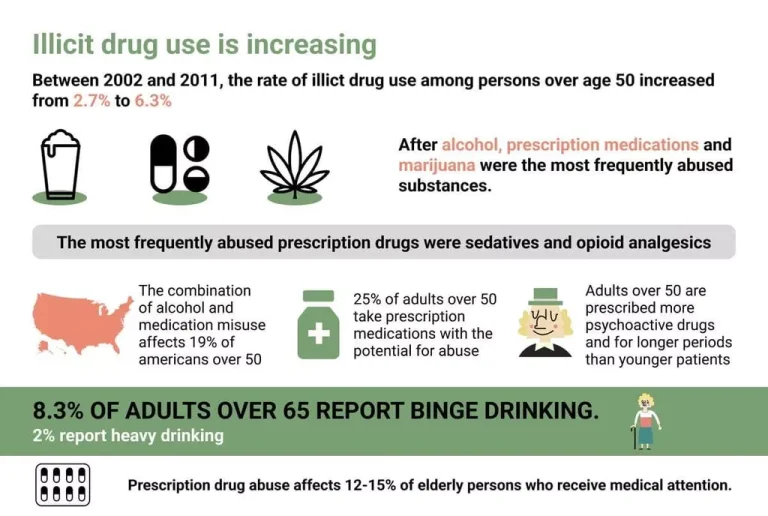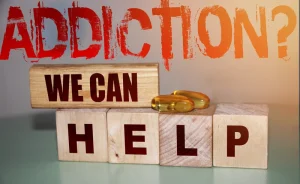
Despite being aware of these harmful outcomes, many people who use drugs continue to take them, which is the nature of addiction. During the intervention, these people gather together to have a direct, heart-to-heart conversation with the person about the consequences of addiction. People struggling with addiction usually deny they have a problem and hesitate to seek treatment. An intervention presents a loved one with a structured opportunity to make changes before things get even worse and can motivate someone to seek or accept help. Use of hallucinogens can produce different signs and symptoms, depending on the drug.

Recovery from Addiction

The short-term effects cause a feeling similar to alcohol use. This category refers to a wide variety of substances people often use at dance parties, clubs, and bars. But there are concrete skills you can use to hone your assertiveness and advocate for yourself. U.S. alcohol guidelines are changing https://ecosoberhouse.com/ as health concerns increase. Alcohol-free cocktails and beer, along with cannabis-infused beverages, are gaining users. Because the brain uses a disproportionate amount of energy to power its many high-level functions, thiamine deficiency can lead to damage to the mitochondria of nerve cells.
- Addressing the nation’s mental health crisis and drug overdose epidemic is a top priority of the Biden-Harris Administration and are core pillars of the Administration’s Unity Agenda.
- She said most services typically employed qualified counsellors, who she would expect to have alcohol or drug expertise.
- Substance users may have dilated pupils or glazed eyes, slurred speech, and ramble when they talk.
- Irritability, agitation, restlessness, and sleep disruption are common withdrawal symptoms for many drugs as are muscle cramps, headaches, and changes in blood pressure and heart rate.
- It interferes with your functioning—you start missing obligations and events.
- In fact, inability to regulate use results from a physiological process—progressive weakening of the neural circuitry in the brain’s executive control center in response to repeated use of a dopamine-activating substance.
- Drug addiction isn’t about just heroin, cocaine, or other illegal drugs.
Risks of Substance Misuse
The clinical manifestation of abrupt cessation of a substance of abuse is withdrawal. Symptoms of withdrawal range from sweatiness, shakiness, tremors, and seizures to upset stomach, diarrhea, and vomiting. Irritability, agitation, restlessness, and sleep disruption are common withdrawal symptoms for many drugs as are muscle cramps, headaches, and changes in blood pressure and heart rate.
Treatment programs

It may help to get an independent perspective from someone you trust and who knows you well. You can start by discussing your substance use with your primary care provider. Or ask for a referral to a specialist in drug addiction, such as a licensed alcohol and drug counselor, or a psychiatrist or psychologist. Although there are some schools of thought that stress the need for complete abstinence, many people are able to learn to control addictive behaviors, such as drinking, eating, shopping, and sex. The approach that will be best for you depends on many factors and is best decided in collaboration with your doctor or therapist.
- You can start by discussing your substance use with your primary care provider.
- Methadone treatment, whether for OUD or pain, is not without risks.
- In addition to getting appropriate treatment, there are things that you can do that will make it easier to cope and aid in your recovery.
- Addiction to drugs while pregnant can lead to serious outcomes for both mother and child.
- Mindfulness training, a common component of cognitive behavioral therapy, can help people ride out their cravings without acting on them.
- It is considered stigmatizing, so it is now preferred to use language such as “substance misuse” or “substance use disorder.”
Effects of Drug Addiction

Because families are interactive systems, everyone is affected, usually in ways they are not even aware of. When a person goes into treatment, it isn’t just a case of fixing the problem person. The change destabilizes the adaptation the family has made—and while the person in recovery is learning to do things differently, so must the rest of the family learn to do things differently. Otherwise, their behavior is at risk of cementing the problem in place.
There is no way to predict who will become addicted to drugs, but a combination of influences can increase a person’s risk of developing an addiction. An addiction is a disorder characterized by the compulsive use of a substance or activity that triggers our reward systems despite experiencing adverse consequences. A person’s genes and what is drug addiction environment influence this complex condition. Addiction is widely viewed as a brain disease due to how it impacts the brain’s reward, pleasure, and self-control circuits. Everyone’s bodies and brains are different, so their reactions to drugs can also be different. Some people may become addicted quickly, or it may happen over time.
- By Buddy TBuddy T is a writer and founding member of the Online Al-Anon Outreach Committee with decades of experience writing about alcoholism.
- Barbiturates, benzodiazepines and hypnotics are prescription central nervous system depressants.
- Stimulants include amphetamines, meth (methamphetamine), cocaine, methylphenidate (Ritalin, Concerta, others) and amphetamine-dextroamphetamine (Adderall XR, Mydayis).
- The short-term effects cause a feeling similar to alcohol use.
- Use of hallucinogens can produce different signs and symptoms, depending on the drug.
- The approach that will be best for you depends on many factors and is best decided in collaboration with your doctor or therapist.
- Instead, research indicates that it is more related to what else is, or isn’t, going on in a person’s life that makes the sensation a substance induces so attractive.
- Growing evidence suggests that methadone is as safe and effective as buprenorphine for patients who use fentanyl.
- Substances of abuse deliver an intense sensation that creates a neurochemically driven motivation to repeat the experience again and again.
- But usually, you’re able to change your unhealthy habits or stop using altogether.
- An earlier study similarly found that 89% of patients who tested positive for fentanyl at methadone treatment intake and who remained in treatment at 6 months achieved abstinence.
- Patients at one California OTP in a small qualitative study reported increased autonomy and treatment engagement.
From that perspective, it is a sign of inability to cope with a stressor; behind the psychology of addiction is a sense of powerlessness, and it always a sign that better stress-management skills are needed. By Buddy TBuddy T is a writer and founding member of the Online Al-Anon Outreach Committee with decades of experience writing about alcoholism. Because he is a member of a support group that stresses the importance of anonymity at the public level, he does not use his photograph or his real name on this website. If you have tried to quit or cut back on your own and found you could not do so, you may want to try other options and learn more about treatment for substance use. While naloxone has been on the market for years, a nasal spray (Narcan, Kloxxado) and an injectable form are now available, though they can be very expensive.
Many people desire only to moderate use and bring it under control. In fact, there is growing support for what is called harm reduction, which values any moves toward reducing the destructive consequences of substance abuse. Researchers find that taking incremental steps to change behavior often motivates people to eventually choose abstinence. Nevertheless, many treatment programs, including Alcoholics Anonymous, require a commitment to complete abstinence as a condition of admission.

